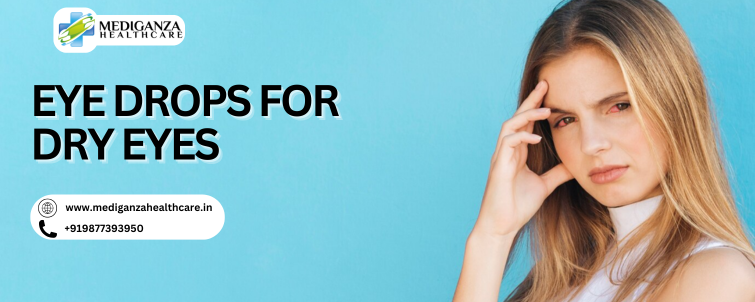




Contents
Table of Contents
ToggleEye Drops for Dry Eyes occur when your tear glands don’t produce enough tears or when tears evaporate too quickly. This can lead to discomfort, redness, irritation, and even blurry vision.
Choosing the right eye drops depends on the severity of your condition. Here are the main types:
These are the most common over-the-counter drops that provide immediate relief by mimicking natural tears. Look for preservative-free options if you have sensitive eyes.
Thicker than artificial tears, gel drops provide longer-lasting moisture and are ideal for moderate to severe dry eye symptoms.
These are recommended for those who use eye drops frequently. Preservatives can cause irritation with long-term use.
If you have meibomian gland dysfunction (MGD), lipid-based drops help stabilize the tear film and prevent rapid tear evaporation.
For chronic dry eye syndrome, prescription drops like cyclosporine (Restasis) or lifitegrast (Xiidra) help increase tear production and reduce inflammation.
With so many options available, it’s essential to pick the right one for your needs.
Here are some top-rated options:
Applying eye drops the right way ensures maximum effectiveness. Follow these steps:
Along with eye drops, lifestyle changes can improve dry eye symptoms.
Foods rich in omega-3s, like salmon, flaxseeds, and walnuts, help maintain healthy tear production.
Drinking enough water keeps your body and eyes well-hydrated.
Adding moisture to the air prevents eyes from drying out, especially in winter.
Follow the 20-20-20 rule—every 20 minutes, look at something 20 feet away for 20 seconds.
Cigarette smoke and strong winds can exacerbate dry eye symptoms.
Q: What are the best eye drops for severe dry eyes?
A: For severe cases, gel drops or prescription eye drops like Restasis, Xiidra, and Cequa are recommended. Artificial tears with hyaluronic acid or lipid-based formulations also provide long-lasting relief.
Q: Can I use eye drops every day?
A: Yes, but if you need frequent use, opt for preservative-free drops to prevent irritation and potential side effects.
Q: Are there side effects of using eye drops for dry eyes?
A: Some eye drops may cause temporary burning, redness, or blurred vision. If irritation persists, consult an eye specialist.
Q: How long does it take for eye drops to work?
A: Most over-the-counter artificial tears provide instant relief, while prescription drops like Restasis and Xiidra may take several weeks for full effectiveness.
Q: Can contact lens wearers use regular eye drops?
A: Not all drops are suitable for contact lenses. Look for re-wetting drops labeled “safe for contact lenses” to avoid discomfort or damage.
Q: Do dry eyes go away on their own?
A: Mild dry eyes may improve with hydration, diet changes, and reducing screen time, but chronic dry eye often requires ongoing treatment with lubricating drops or medical intervention.

Eye drops for dry eyes provide essential relief for those struggling with irritation and discomfort. Whether you need quick hydration, long-lasting moisture, or treatment for chronic dry eye, choosing the right drops can significantly improve eye health. Pairing eye drops with healthy habits, like staying hydrated and taking screen breaks, will further support eye comfort. If symptoms persist, consult an eye doctor for a customized treatment plan.
Similarly, Contact Mediganza Healthcare if you have any queries related to the Eye Drops for Dry Eyes any other part of PAN India. After that, Here are our contact details.